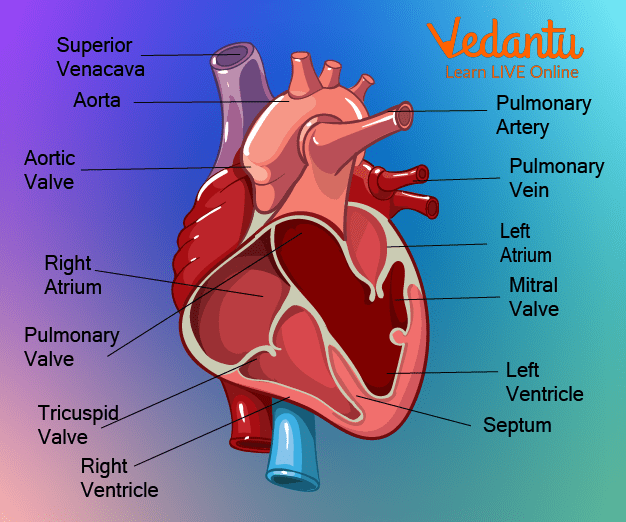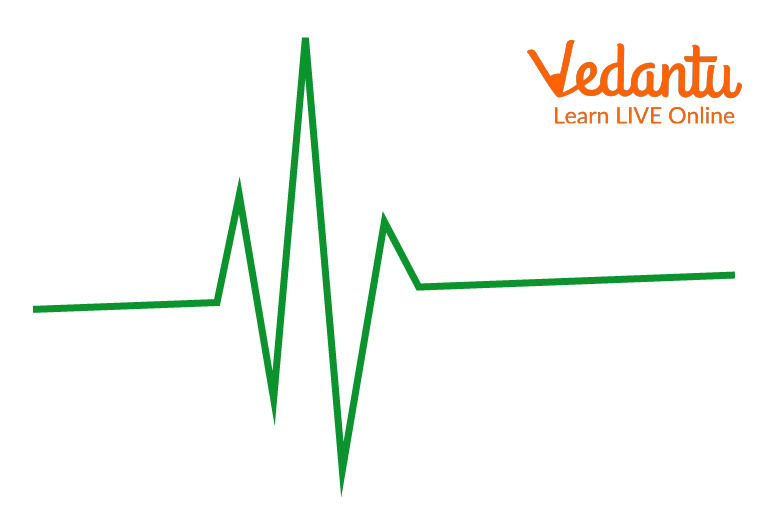




An Introduction to the Heart
Have you ever thought about what is pumping blood inside your body? So, let us learn about the pumping organ. It is the heart. The heart is a muscular organ in many animals. The heart pumps blood through the veins of the circulatory system. The pumped blood conveys oxygen and supplies to the body while conveying metabolic waste, maintaining blood pressure, etc. For example, carbon dioxide to the lungs.
In people, the heart is roughly the size of a fist and is situated between the lungs and the chest's centre compartment. In human beings, different vertebrates, and birds, the heart is partitioned into four chambers: upper left and right atria and lower left and right ventricles. Commonly, the right chamber and ventricle comprise together as the right heart and their left partners as the left heart.

The Heart
Human Heartbeat
The rhythmic contraction and relaxation of heart muscles are known as heartbeat. Once it starts from birth then it will continue till death. If someone's heart is not beating that means the person is dead. Heart rate is defined as the number of heartbeats per minute.
A heartbeat is a two-section pumping move that starts about a second. As blood gathers in the upper chambers (the right and left atria), electrical signals are sent that make the atria contract.
This compression drives blood through the valves into the resting lower chambers (the right and left ventricles). This piece of the two-section pumping stage (the more extended of the two) is called diastole.
The second part of the pumping stage starts when the ventricles are loaded with blood. The electrical signals travel along a pathway of cells to the ventricles, making them contract. This is called systole.
From the left ventricle, the blood flows through the aortic valve to the rest of our body. After blood moves into the pulmonary artery and the aorta, the ventricles unwind, and the valves close. The valve then opens again. This cycle continues.
Heart Rate
The number of times your heart beats in a minute is known as your heart rate or pulse. Everybody's heart rate is different. When you are at rest, it is lower, whereas during exercise, it is higher.
The heart normally beats around 60 to 80 times each minute when you are at rest. However, this can vary. As you get older, your resting pulse rises. It is typically lower in individuals who are physically fit.
It can increase due to stress, anxiety or any medical reason.

Heartbeat
Summary
The muscular organ which is about the size of a fist is known as the heart, found simply behind and somewhat left of the lungs. The heart pumps blood through the organisation of courses and veins called the cardiovascular system. There are four chambers of heat. The heart pumps blood to the whole body.
Fish, conversely, have two chambers, a chamber, and a ventricle, while reptiles have three chambers. In a healthy heart, blood streams one way through the heart because heart valves prevent backflow. The heart is present in a protective sac, the pericardium, which likewise contains a limited quantity of fluid. The epicardium, myocardium, and endocardium are three layers of the heart.
FAQs on What is Heartbeat?
1. Define heart.
A fist-sized organ, the heart circulates blood throughout our body. It serves as our circulatory system's main organ. Four major muscle-driven chambers make up our heart, each powered by electrical impulses.
2. What are the main functions of the heart?
The heart's primary jobs include:
Pumping oxygen-rich blood to other bodily components
Delivering hormones and other essential nutrients to various bodily areas
Receiving and transporting metabolic waste products from the body to the lungs where it is oxygenated
Keeping blood pressure constant
3. Where is the location of the heart?
The heart is located in the chest. It is located behind and somewhat to the left of your breastbone in the front and middle of your chest.
4. What is the average heartbeat for adults?
Adults typically have a resting heart rate between 60 and 100 beats per minute. A lower resting heart rate typically indicates improved cardiovascular fitness and more effective cardiac function. A well-trained athlete, for instance, might have a typical resting heart rate that is closer to 40 beats per minute.
5. Does stress make your heart beat faster?
Irregular heartbeats and anxiousness are common side effects. The autonomic nervous system's "fight or flight" reaction is triggered by anxiety (ANS). Your ANS engages when you feel concerned about a circumstance, raising your heart rate.









